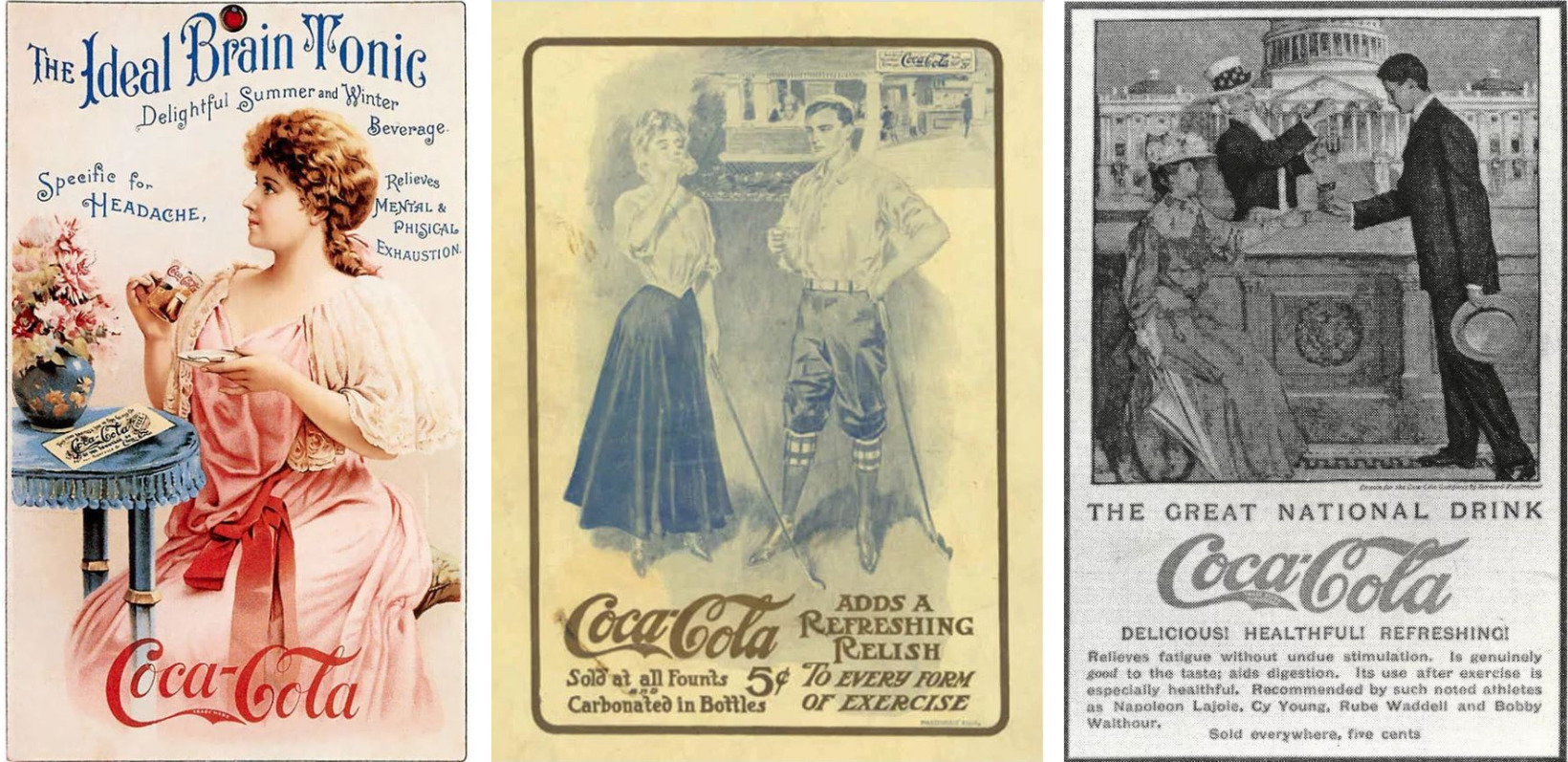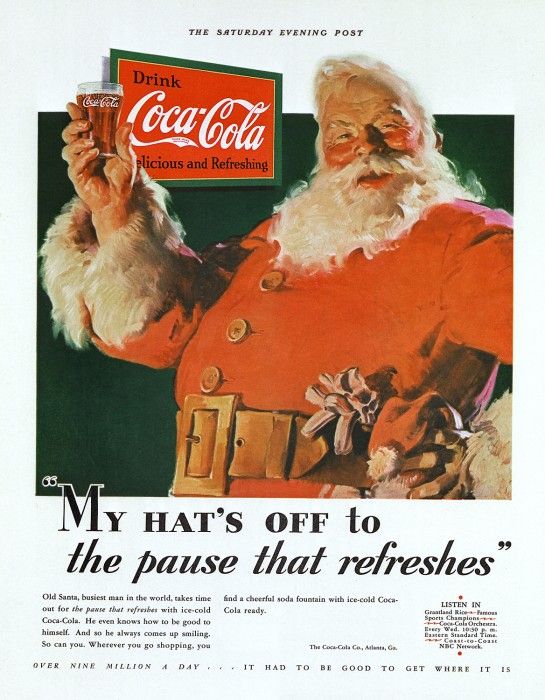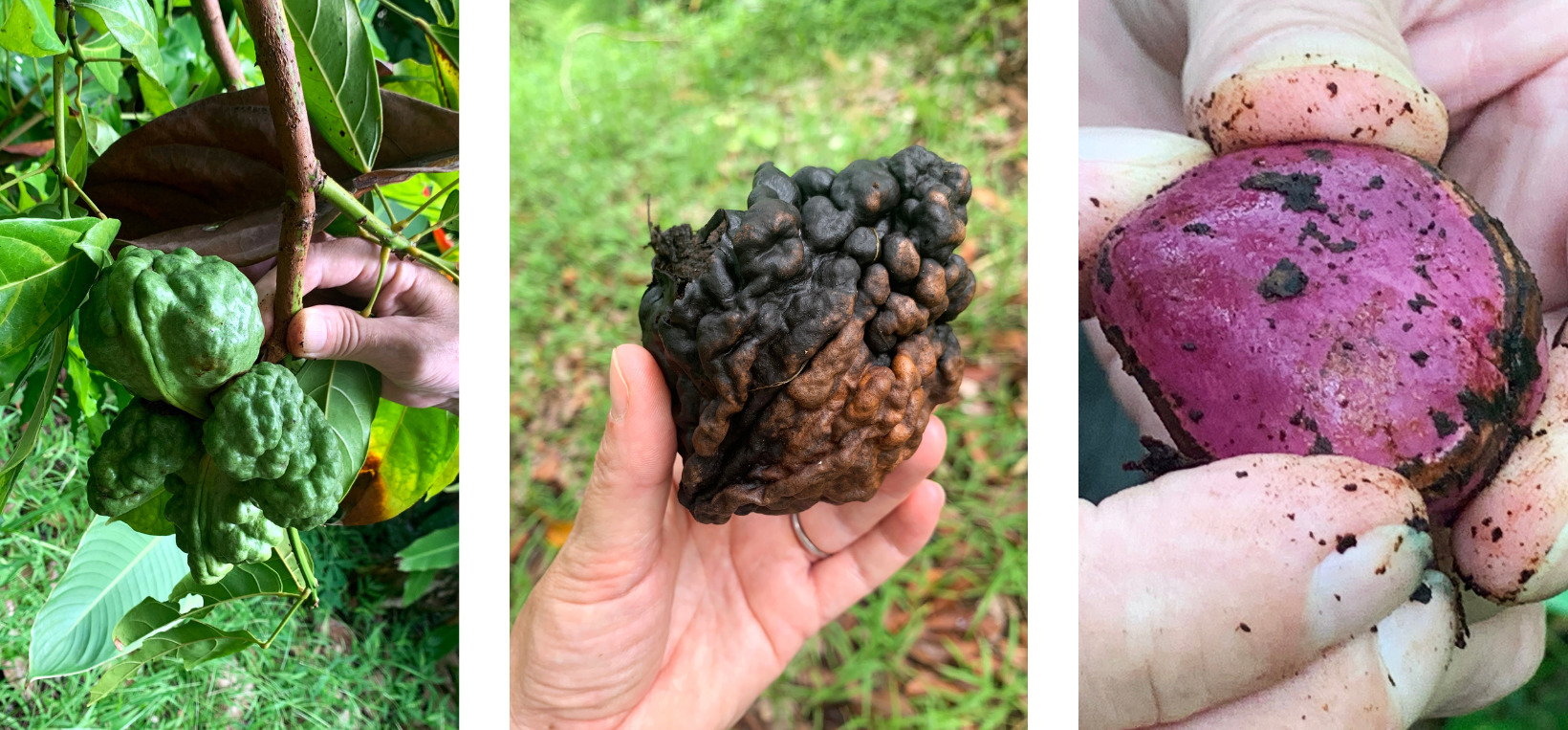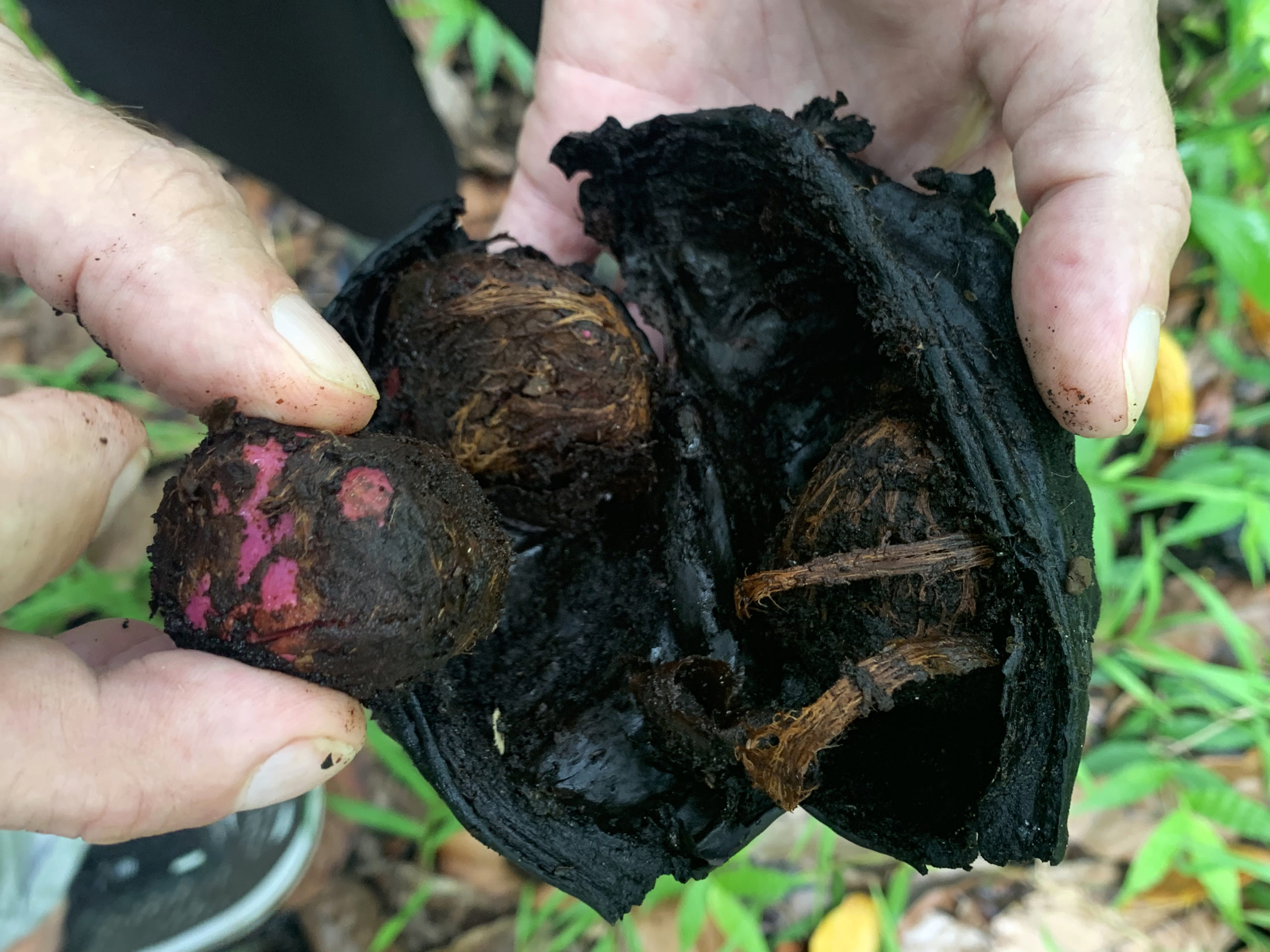Gastropod looks at food through the lens of science and history.
Co-hosts Cynthia Graber and Nicola Twilley serve up a brand new episode every two weeks.
Co-hosts Cynthia Graber and Nicola Twilley serve up a brand new episode every two weeks.

From left to right, vintage Coca-Cola ads from the 1890s, 1906, and 1907. Images courtesy of Mark Pendergrast, Tom Bates, and Galakospeculoos, compiled by NPR.
Bart Elmore is a professor of history, focusing on the environment and business, at The Ohio State University, and the author of Citizen Coke: The Making of Coca-Cola Capitalism. He's also featured in our episode on Monsanto, Monsanto or Monsatan?, discussing the book he wrote after researching Monsanto's work producing caffeine and sugar for Coca-Cola.

The first Coke ad featuring Santa Claus, published in 1931 as part of a push to increase the company's sales during the slow winter months. Though Coke didn't create the modern image of Santa, they certainly helped popularize it, and the big man in red and white continues to be a mainstay in Coke advertising around Christmas to this day. Image courtesy of the Coca-Cola United blog.
We got to see kola nut, one of Coke's long-standing ingredients, growing on the tree at Hana Farms in Maui, Hawaii, thanks to owner Martin Vasey. Hana Farms grows fruits, vegetables, flowers, and spices, which end up on the menu at their delicious restaurant Bamboo Hale.
 Kola nuts from Martin's farm: far left, underripe green pods on the tree; middle, a ripe pod; far right, a purple kola nut removed from the pod and ready for chewing. Photos by Nicola Twilley.
Kola nuts from Martin's farm: far left, underripe green pods on the tree; middle, a ripe pod; far right, a purple kola nut removed from the pod and ready for chewing. Photos by Nicola Twilley.
 Removing the kola nut from its pod. Photo by Nicola Twilley.
Removing the kola nut from its pod. Photo by Nicola Twilley.
You can learn more about soda's effects on health—and the attempts to weed it out of the American diet—in our two-part series on soda: Souring on Sweet: The Great Soda Wars, Part 1 and Dirty Tricks and Data: The Great Soda Wars, Part 2.
Click here for a transcript of the show. Please note that the transcript is provided as a courtesy and may contain errors.